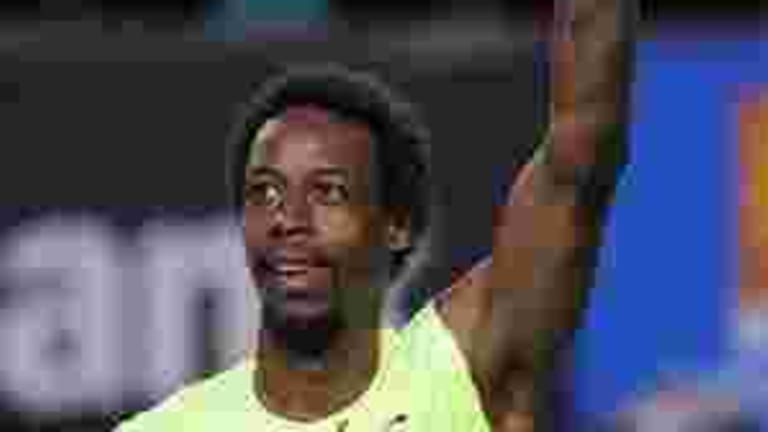MELBOURNE—Every tennis fan who has ever attended a tournament knows the sensation. You see the draw sheet and circle a match that you want to watch. You walk to the court at the time it’s scheduled to begin, and when you get there...you stop in your tracks and groan. You forgot that there were going to be lines, long lines, lines at every gate, lines that twist and turn and disappear around corners and maybe even thread in and out of bathrooms. You groan again.
There was a lot of groaning at approximately 7:20 P.M. this evening in the vicinity of Margaret Court Arena. The much-anticipated match between Gael Monfils and Alexandr Dolgopolov had begun minutes earlier, which meant that everyone would have to wait for three games before they'd have a chance of seeing a point. Even that seemed unlikely, considering that there didn’t appear to be an empty seat inside the stadium. The crowd outside, which included a high percentage of the backwards-hatted and the beered up, had the ragged and reddish look of people who had spent a day squinting into the sun. They didn’t sound enthusiastic about the prospect of standing in line for the next half hour.
As generally happens in these situations, the next game between Monfils and Dolgopolov was interminable. Each time the chair umpire called deuce, there was a collective muttering, as well as a few “Jesus Christ!”s hissed for good measure. Inside, the roars of the delighted audience made the arena sound like a paradise of incredible tennis, a paradise we could only imagine as we stared at the concrete wall in front of us.
With a story to do, I couldn’t wait any longer; I walked to the front of the line and showed the usher my credential. While I waited there, I had a view of one side of the court, where Dolgopolov was playing. In isolation, he made the sport into a dance. Leaping to his right on a return, he smoothly folded his arm into his side and reflexed a blistering serve back. He hopped high in the air as he split-stepped across the baseline. Dolgo, the most graceful of players, almost made more sense in this context, as an artist, a solo act on a stage, rather than as a competitor.
By the time I sat down in the media section, I had forgotten all about the grumbling unlucky ones outside. It did feel something like a paradise of tennis in here. Sitting in Margaret Court Arena as the sun sets and a quality match is building momentum can give you that feeling. It’s no accident that this court is the annual residence of those crowd-pleasing Frenchmen, Monfils and Jo-Wilfried Tsonga.
MCA is also the heart of Melbourne Park, a public space that feels lived-in and democratic. There are no luxury boxes or box seats that I've seen, no loge or mezz or corporate section, no ticket hierarchy of any kind. This will likely change when MCA receives a planned makeover and expansion, but for now, the people occupying the front row seats look and dress pretty much the same as those in the back row and every row in between. As for viewing, MCA is small enough to make the audience feel like one, unified group, yet big enough to make the crowd’s collective actions seem significant. Where else but here, in Oz, in MCA, would an audience do a slow-motion wave during one set, and then try it on fast-forward a little later? Both worked brilliantly.

